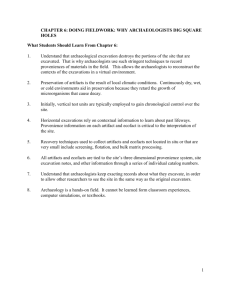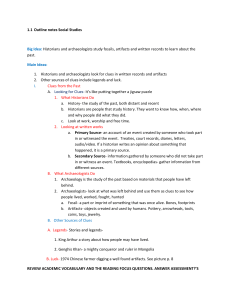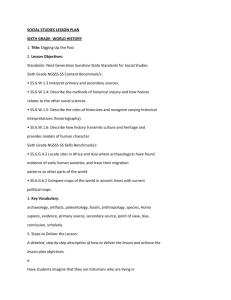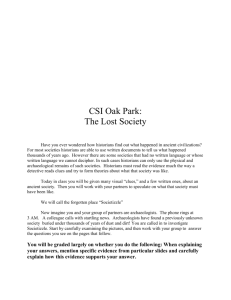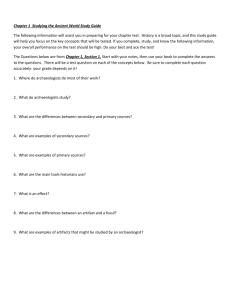Background Reading - Henry County Schools
advertisement
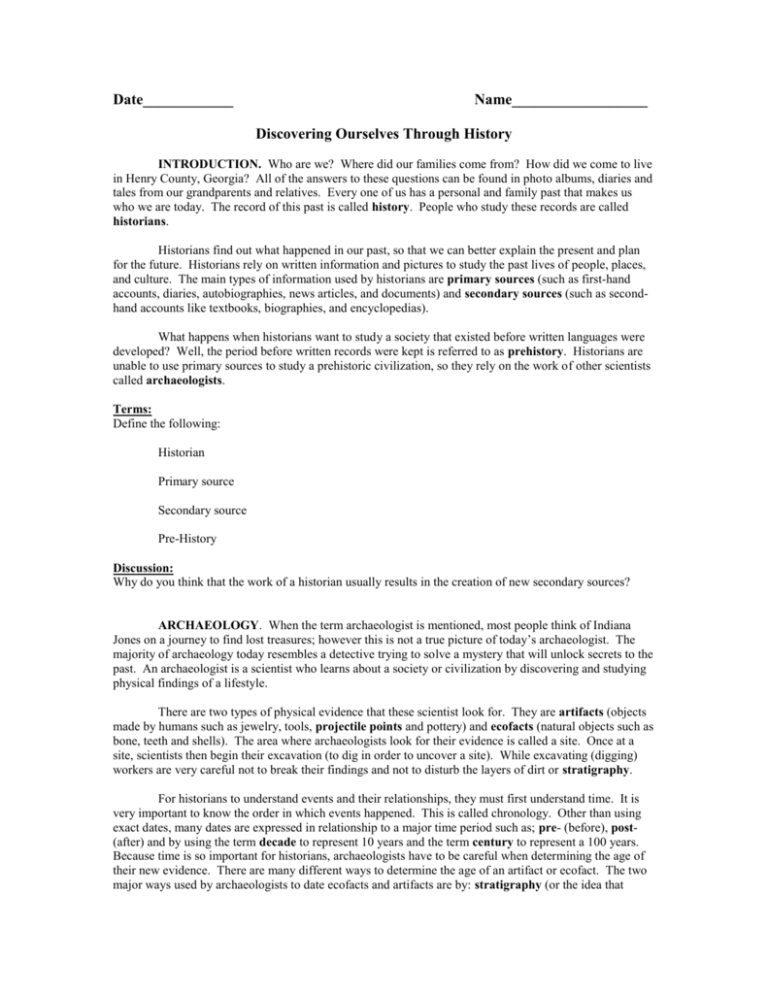
Date____________ Name__________________ Discovering Ourselves Through History INTRODUCTION. Who are we? Where did our families come from? How did we come to live in Henry County, Georgia? All of the answers to these questions can be found in photo albums, diaries and tales from our grandparents and relatives. Every one of us has a personal and family past that makes us who we are today. The record of this past is called history. People who study these records are called historians. Historians find out what happened in our past, so that we can better explain the present and plan for the future. Historians rely on written information and pictures to study the past lives of people, places, and culture. The main types of information used by historians are primary sources (such as first-hand accounts, diaries, autobiographies, news articles, and documents) and secondary sources (such as secondhand accounts like textbooks, biographies, and encyclopedias). What happens when historians want to study a society that existed before written languages were developed? Well, the period before written records were kept is referred to as prehistory. Historians are unable to use primary sources to study a prehistoric civilization, so they rely on the work of other scientists called archaeologists. Terms: Define the following: Historian Primary source Secondary source Pre-History Discussion: Why do you think that the work of a historian usually results in the creation of new secondary sources? ARCHAEOLOGY. When the term archaeologist is mentioned, most people think of Indiana Jones on a journey to find lost treasures; however this is not a true picture of today’s archaeologist. The majority of archaeology today resembles a detective trying to solve a mystery that will unlock secrets to the past. An archaeologist is a scientist who learns about a society or civilization by discovering and studying physical findings of a lifestyle. There are two types of physical evidence that these scientist look for. They are artifacts (objects made by humans such as jewelry, tools, projectile points and pottery) and ecofacts (natural objects such as bone, teeth and shells). The area where archaeologists look for their evidence is called a site. Once at a site, scientists then begin their excavation (to dig in order to uncover a site). While excavating (digging) workers are very careful not to break their findings and not to disturb the layers of dirt or stratigraphy. For historians to understand events and their relationships, they must first understand time. It is very important to know the order in which events happened. This is called chronology. Other than using exact dates, many dates are expressed in relationship to a major time period such as; pre- (before), post(after) and by using the term decade to represent 10 years and the term century to represent a 100 years. Because time is so important for historians, archaeologists have to be careful when determining the age of their new evidence. There are many different ways to determine the age of an artifact or ecofact. The two major ways used by archaeologists to date ecofacts and artifacts are by: stratigraphy (or the idea that deeper layers of earth are generally older the ones above it) and radio carbon dating (process used to determine the approximate age of artifacts made of materials such as wood or animal bone). Once the excavation is complete, archaeologists then move on to researching their findings. They clean, sort, identify and date their findings. Perhaps the most important of all of the archaeologists’ work now takes place through dating the findings and recording the new information for other archaeologists and historians to study. Terms: artifacts ecofacts stratigraphy radio carbon dating decade century Think about it! Imagine a small town where families are enjoying day to day life. Now imagine for a moment that a huge volcanic eruption takes place just miles from your town. The people of the town have not time to leave or escape the danger from the volcanic lava and heat. The town is covered and buried in lava and ash from the eruption. The description you just read is real. It happened in a town called Pompeii. Thanks to the work of archaeologists and historians, we have uncovered this once lost society and are able to learn about the people who once lived there. If something happened and destroyed our school, what objects and information do you think future archaeologists would find and what conclusions could they draw about their newfound “site”?

